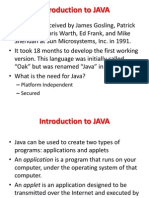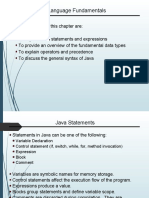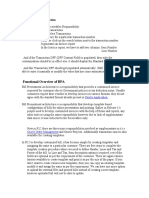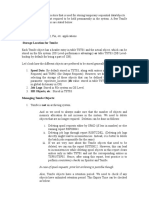0% found this document useful (0 votes)
46 views24 pagesLanguage Elements
This document provides an overview of key elements of the Java programming language including statements, expressions, variables, data types, operators, and comments. It describes how to declare and assign variables of primitive types like int and string. It also covers arithmetic, comparison, and logical operators as well as string concatenation. The document gives examples and guidelines for naming variables and defining constants.
Uploaded by
Luda GlavaCopyright
© © All Rights Reserved
We take content rights seriously. If you suspect this is your content, claim it here.
Available Formats
Download as PDF, TXT or read online on Scribd
0% found this document useful (0 votes)
46 views24 pagesLanguage Elements
This document provides an overview of key elements of the Java programming language including statements, expressions, variables, data types, operators, and comments. It describes how to declare and assign variables of primitive types like int and string. It also covers arithmetic, comparison, and logical operators as well as string concatenation. The document gives examples and guidelines for naming variables and defining constants.
Uploaded by
Luda GlavaCopyright
© © All Rights Reserved
We take content rights seriously. If you suspect this is your content, claim it here.
Available Formats
Download as PDF, TXT or read online on Scribd
/ 24






















































































